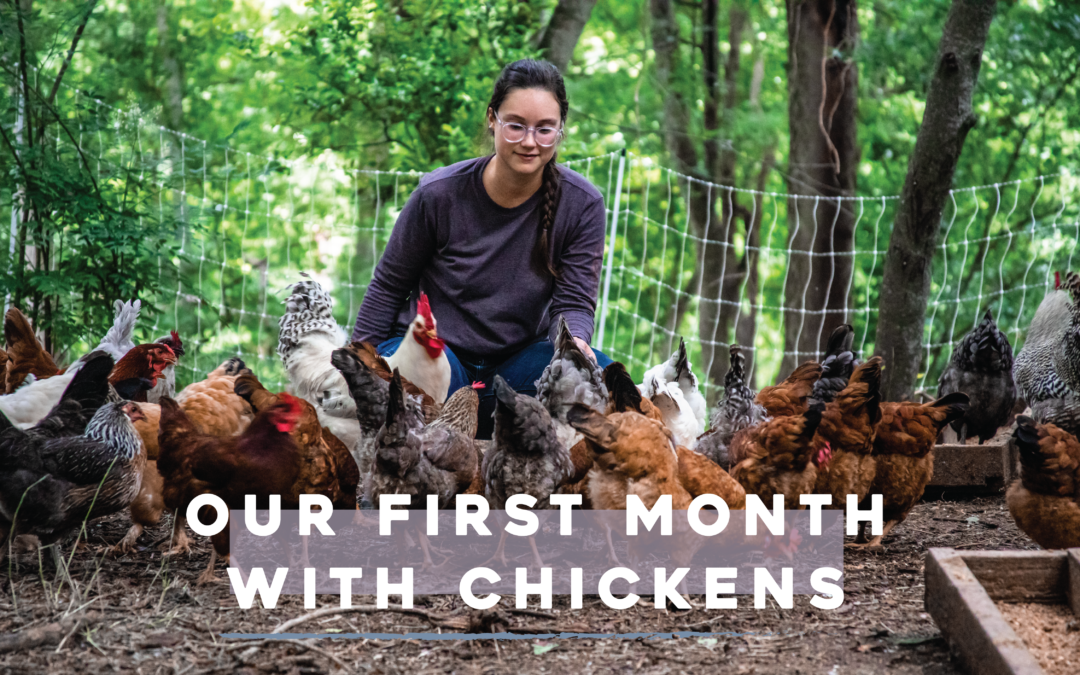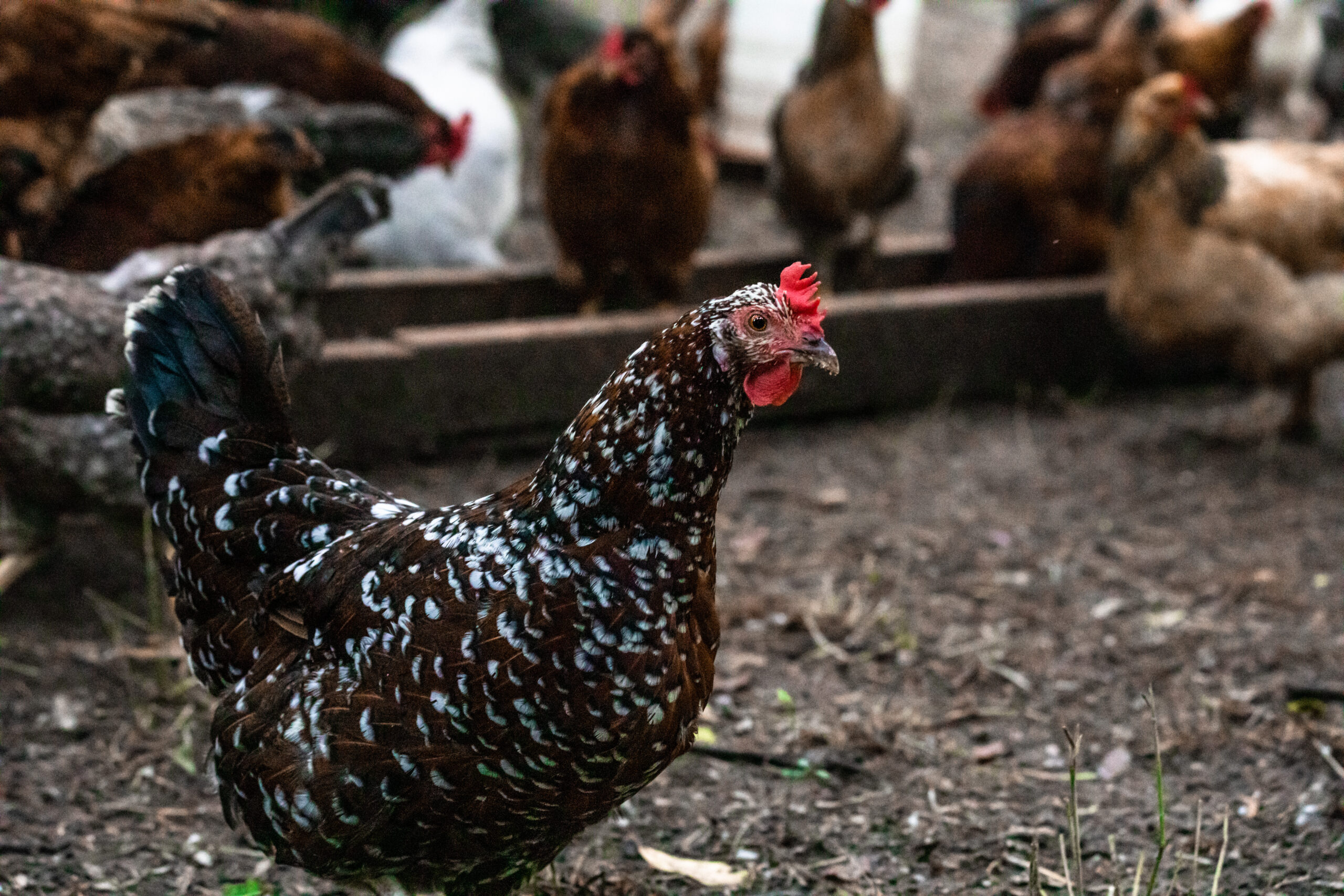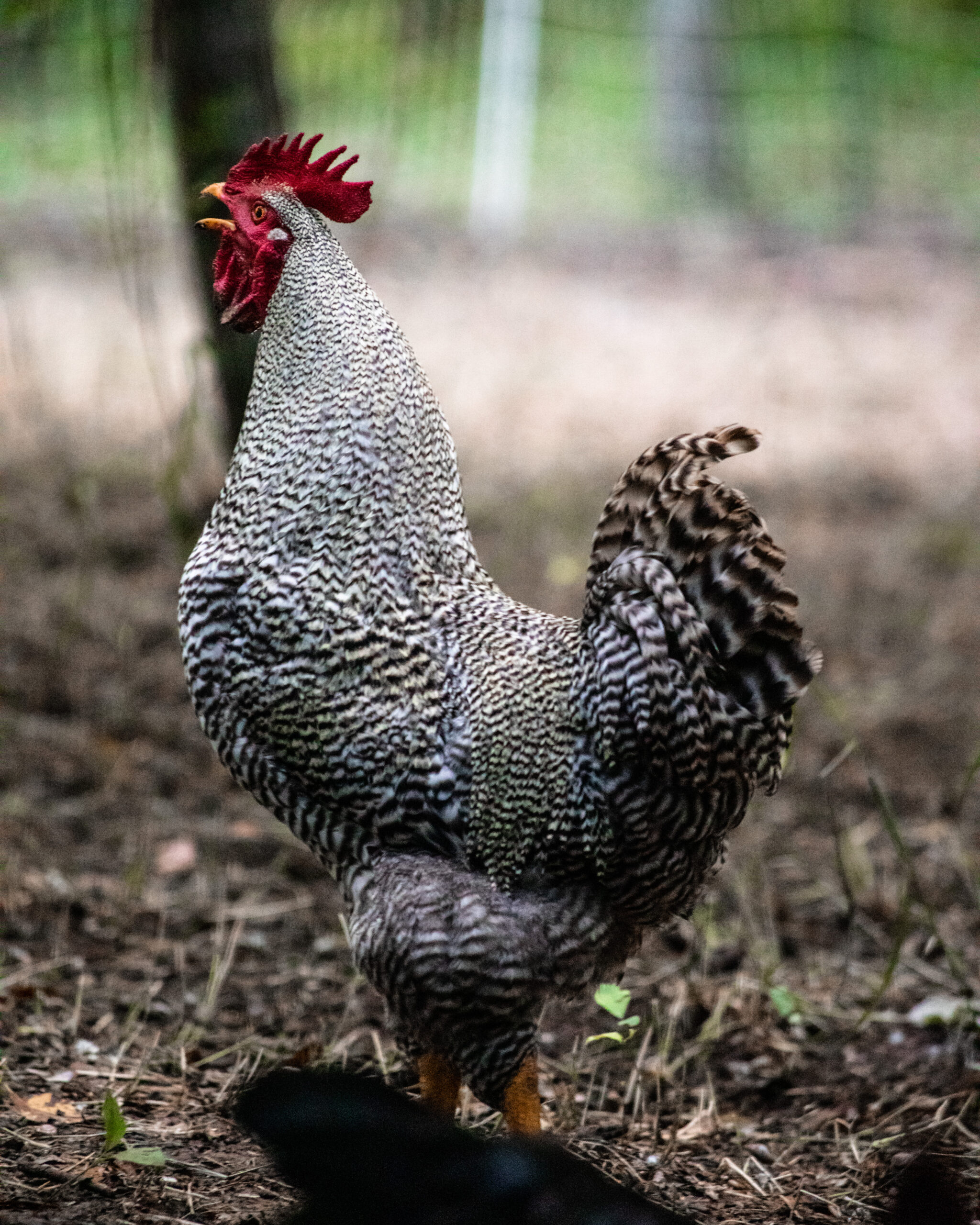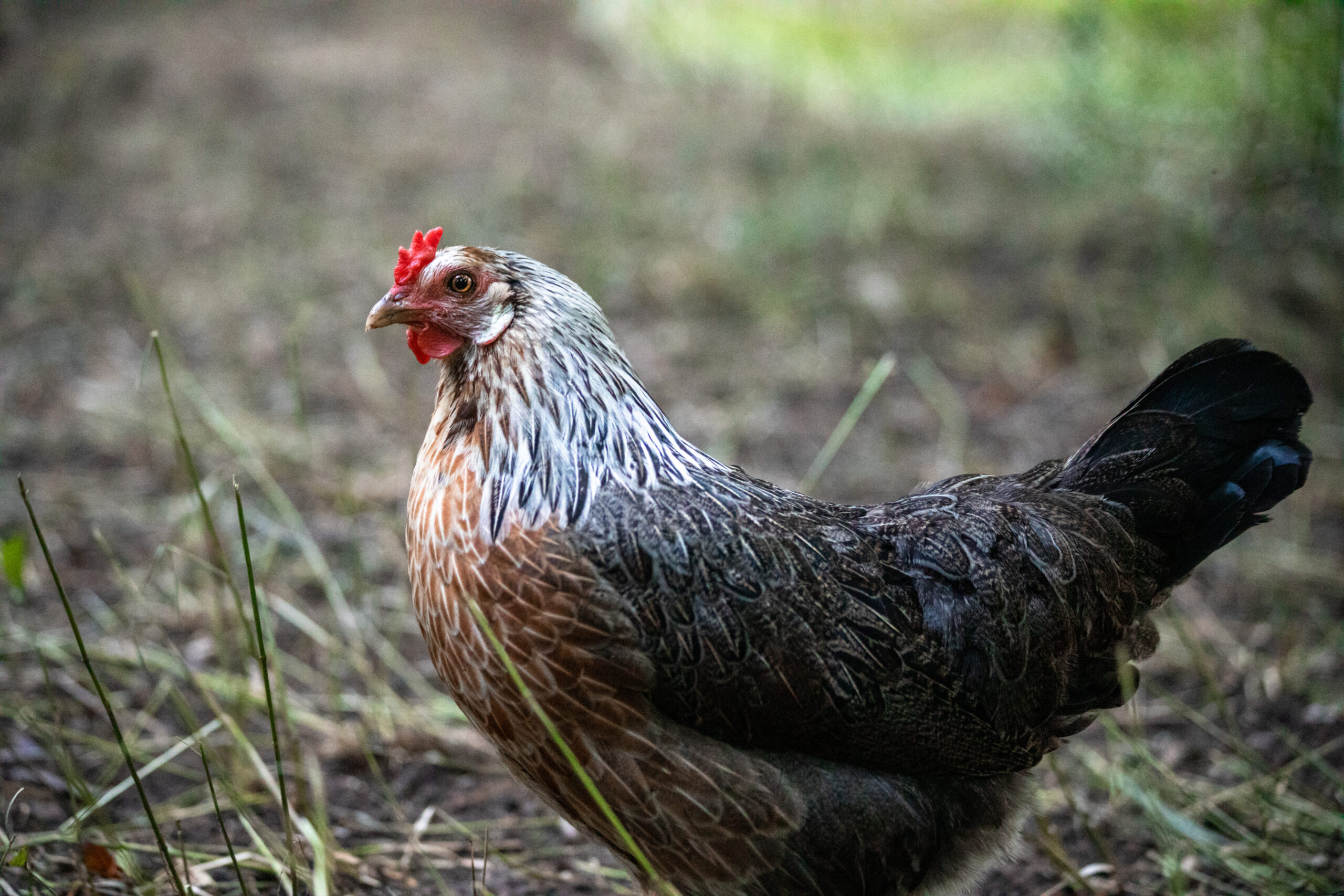Our First Month with Chickens

If you didn’t hear, we have settled down in Bastrop, Texas! One of the first things we did here (even before looking for a house) was buy a small poultry farm together with my (Andrea’s) uncle.
“What a weird first purchase!” you may say, and I agree! But the story behind this venture is simple: my uncle had a tenant who had started a poultry operation and was looking to sell it. After getting used to seeing the birds on his land, my uncle grew fond of the idea and didn’t want to see them go. I had mentioned previously that I eventually wanted some backyard chickens in the future, so my uncle suggested we buy the operation together.
Now, this is not your average backyard chicken operation. When we took over, we had 75 chickens, 10 turkeys, and 2 ducks, collectively laying an average of 50 eggs per day. It’s been an adventurous first month with these creatures, and I want to share some of our stories with you!
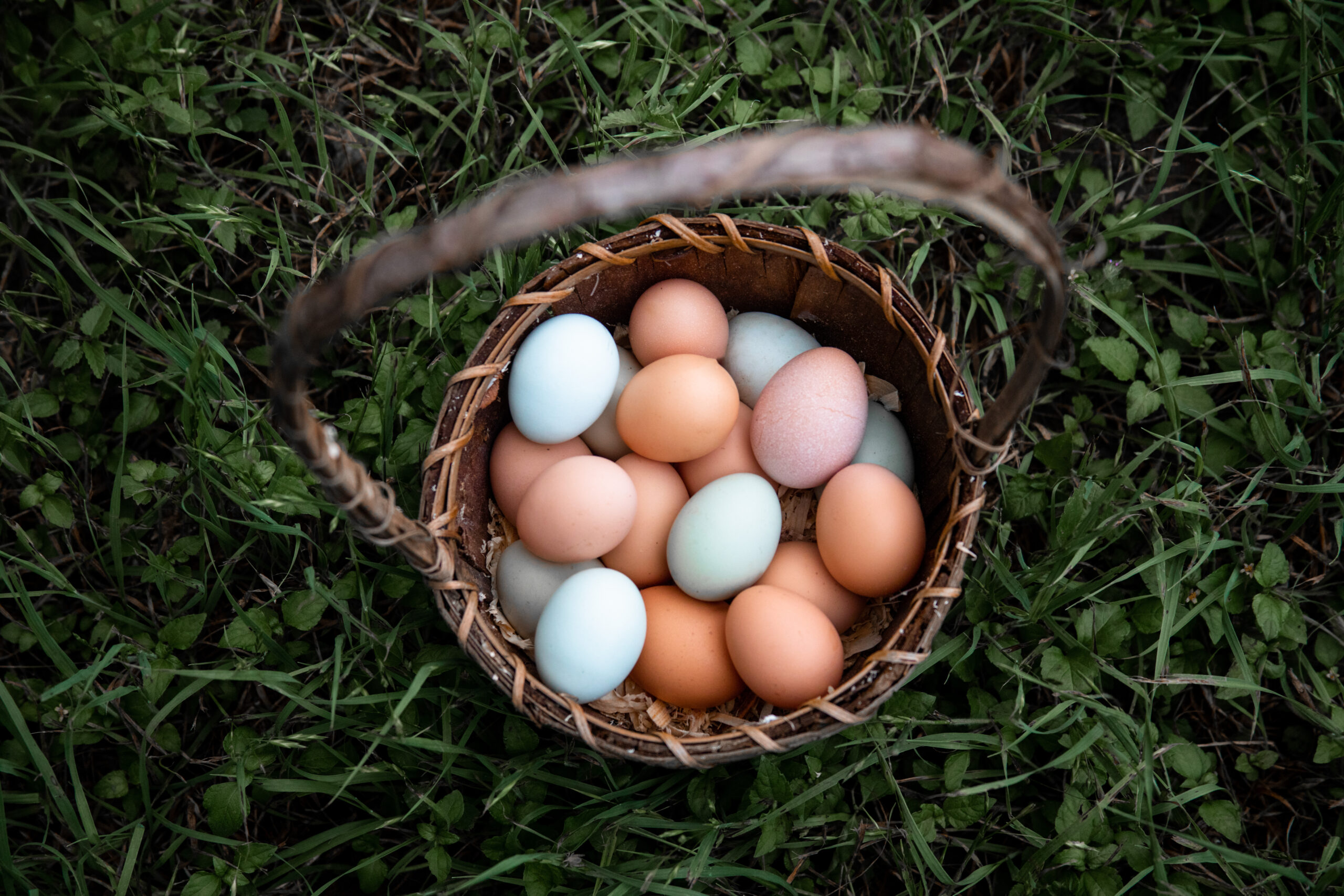
Moving Day #1
One of our first tasks was to move all of the birds a short distance to a fresh pasture. The chicken part of the operation was set up for rotational grazing with moveable chicken tractors and electric netting fences, and it was past time for them to be moved.
Knowing very little about raising chickens, we of course made all the wrong moves. In my research, I had found that chickens always return to their coops at night where they feel safe. So, we let the chickens free roam for the day as we moved their coops to their new spot. After feeding the chickens near the coops and verifying that everyone had explored the coops in their new location, we felt confident that the chickens would know where to sleep for the evening come nightfall.
Well, that’s not at all what happened.
It’s difficult to understand how an animal with the intelligence of a chicken makes decisions, but we learned a TON about it that day. It turned out that instead of recognizing their coops in a new position (or even deciding that the coops were the safest place to spend the night after exploring them), the chickens had all come right back to the place the coops used to be and piled up to sleep for the night. There was absolutely no convincing them to move; another thing we learned is that chickens can get nearly catatonic when it’s time for bed. So we were left with a pile of chickens out in the open with no predator protection and no intention of moving.
There was only one thing to be done: we made a small enclosure around the sleepy birds, then picked up all 75 chickens one by one and carried them to their new home.
It was a long night to say the least. The first few were drowsy and easy to catch, but after moving about half of them, they started to see what was going on. By the last few, they had our number. They were fast, they were cranky, and they did NOT want to be picked up. But after a couple of hours, we had caught them all and placed them safely in their enclosure. That’s when we discovered our next gem of chicken logic. These sleepy chickens did not seek out a safe place to spend the night in their new habitat (aka their coops). No, they settled down right where we set them and slept in a great pile on the ground. As it was a warm night, we simply left them be. This did pose a problem for the next move we did, though, as even 2 weeks later a good half of the chickens were still sleeping in that pile on the ground instead of in their coops.
It was maybe the longest, most tedious way of moving 75 chickens, but we got it done. And with zero casualties at the end, we can still call it a successful move!
A couple of days later, we moved the turkeys and ducks to their new pasture (this time with the help of the previous owner, Cynthia). Even though letting them free roam didn’t work well for the chickens, she suggested we do exactly that for the turkeys and ducks. Sure enough, we opened the electric netting fence and all the birds ran straight out and over onto the neighbor’s property. Tyler and I were sure it was going to be another long day, and catching big heritage turkeys seemed even more difficult than catching chickens. But Cynthia just calmly said she’d go get the turkeys back, walked the long way over to where the birds were exploring, and herded them easily right back to their new enclosure. The whole bird recovery took about 5 minutes.
It is so funny to us that our turkeys behaved so differently than the chickens, especially because heritage turkeys are supposed to be regular escape artists. We are still learning the many intricacies of the different species and breeds of our birds and the unique personalities of our flocks. Though I have a soft spot for the laying chickens, I am enjoying the ride of getting to learn about all these different types of birds!
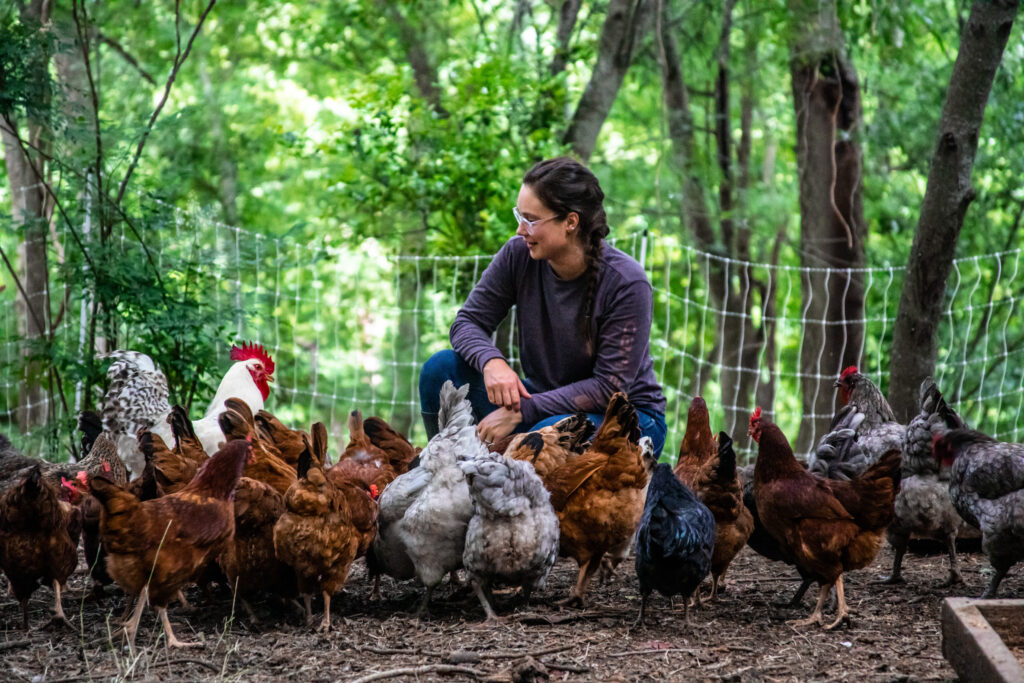
Poor Old Girls
One of the least fun things we did in our first month was processing 25 meat chickens. Slaughtering any animal is technically difficult and emotionally taxing, and our meat chickens were on a timer, making the whole ordeal more stressful (for both parties). These chickens were a breed called Cornish Cross, a fast-growing breed that is meant to be slaughtered between 6-8 weeks of age. Ours were about 7 months old when we took over the farm. They were obese and arthritic, they had trouble walking, and a few even died of organ failure before we were able to process them.
One of the most difficult things about taking over an operation of this size was prioritizing tasks for all of the different types of birds we were caring for and their various needs. Our first priority was to get everyone to a clean pasture with foraging opportunities, and our second priority was to get these poor old girls put out of their misery.
We processed 9 our first day and 16 on the next processing day. Killing, plucking, and eviscerating that many birds on one day is quite a task, even with the fancy equipment we had. We used the kill cone method for slaughtering, cutting the jugular to cause as little pain as possible while allowing the birds to bleed out as quickly as possible.
The scalder loosened up the feathers and the plucker removed them, helping our efficiency immensely. But nothing but practice can make the knife work and evisceration any more efficient. Luckily, we had our fair share of that, and by the end of our second day we were able to move pretty quickly through that step of the process. In the end, we had about 25 whole, freezer-ready chickens averaging about 10 lbs each (if you were wondering how big these poor old girls got!). Unfortunately we were unable to save their organs for eating due to their poor health, but we have enough chicken meat to last us all for several months.
The whole process was emotionally draining, but a great learning experience in the end. And when it’s time to raise our own meat chickens in the future, we’ll know how to take care of them and will make sure we are able to process them before their health deteriorates. Our goal is for all of the birds in our care to have happy, healthy lives, and for our meat birds to have just one bad day.
We are currently working on new plans with our birds, and I’m sure there will be more stories to come. Stay tuned! And if you are in the Bastrop area, let us know if you want some eggs 😉
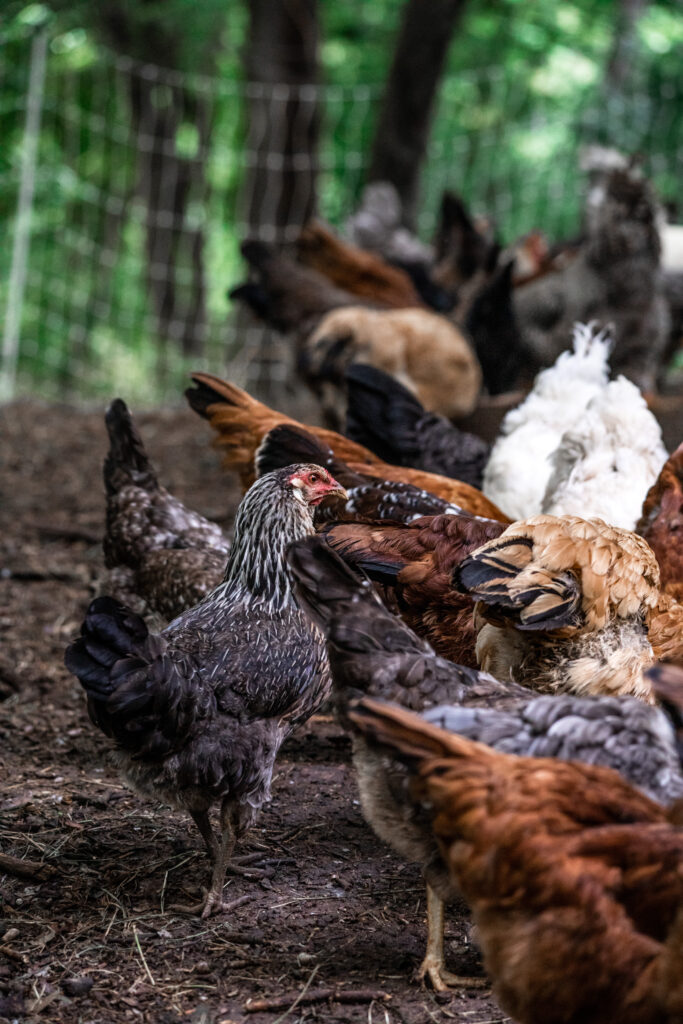


Tyler & Andrea
If there’s one thing we know in the Hixson household, it’s that we want our lives to be wild, free, and lived intentionally. With that as our motto, it makes sense that our resume is pretty eclectic; we’ve started and successfully run our own marketing company, we’ve lived in an RV and traveled the country, we’ve created documentaries, hosted podcasts, learned to hunt and fight, and most recently helped build a no gi jiu jitsu gym in our new home of Bastrop, Texas.
We love doing things ourselves and finding self-sufficiency and independence in unexpected places. From the food we cook all the way up to the businesses we run, we put a lot of thought into everything we do (probably too much thought!) and we feel strongly that that’s what makes our life extraordinary.
CONTACT US
OR, Get Updates
We'll shoot you a message when we release big projects
